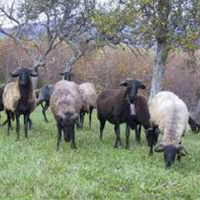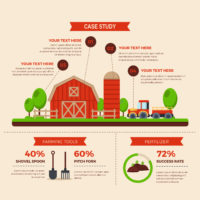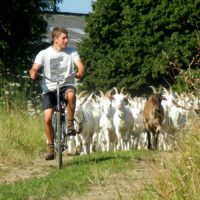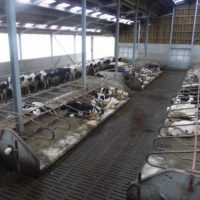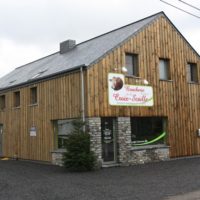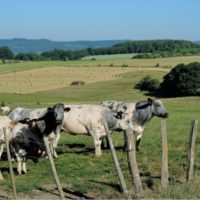Pasture rotation, Sheep genetic selection…
Pasture rotation • Sheep genetic selection • Consociation of legume • Grasslands regularly renovated each year
Centro Genetico Asciano farm
 Pasture rotation • Sheep genetic selection • Consociation of legume • Grasslands regularly renovated each year (.pdf)
Pasture rotation • Sheep genetic selection • Consociation of legume • Grasslands regularly renovated each year (.pdf)
 Rotazione dei pascoli • Ovini in selezione genetica • Consociazione di leguminose • Rinnovo annuale degli erbai (.pdf)
Rotazione dei pascoli • Ovini in selezione genetica • Consociazione di leguminose • Rinnovo annuale degli erbai (.pdf)
Description
The “Centro Genetico Asciano” was built in 2001 with the objective of genetic selection of Massese and Comisana Italian native sheep breeds. The center collaborates directly with the National Association for Pastoralism. The farm annexed to the genetic extends over 280 ha including two irrigated areas of about 30 ha each. Innovations consist in the genetic improvement of the nucleus flocks for productive, reproductive and disease resistance traits and in the management of the land focused on sustainability avoiding over-explotation. A planned consociation of legumes (Alexandrian clover, Sulla coronaria) and grasses (barley, oat and ryegrass) granted a high level and top quality forage production for dairy sheep. The grassland is regularly renovated and minimum tillage soil conservation system with the goal of minimum soil manipulation necessary for a successful crop production is applied. This approach preserve soils limiting the erosion, leaching and organic matter reduction.
Reason for the innovation
- Introduction of novelties in agronomic management and genetic breeding
- Push genetic improvement of the two selected breeds
- Provide a demo farm to support research
Farm description
Environment
- Main soil types: clayey-loam
- Climate: Warm Mediterranean climate
- Average Altitude: 200 m a.s.l.
- Slope: 5-10%
Grassland management
- Grazing: yes, combined with cut use
- Grazing management: rotational stoking
- Length grazing period: 8 month
- Number of cuts: 3-4
- Forage conservation type: hay
- Fertilisation rate: 100 kg of N/ha
Structure
- Annual Work Unit: 10 800 hours
- Agricultural Area: 115 ha UAA
- Arable land 45 ha
- Permanent crop 30 ha
- Permanent grassland area 40 ha
- Temporary grassland area 40 ha
- Rangelands area 10 ha
Animal performance
- Breed type: Comisana sheep, Massese sheep
- Total livestock unit: 195
- Milk production: 180 l/year/head
Why it is working
Extended use of data for flock management.
Expert and professional staff.
Favorable pedoclimatic condition for grazing.
Additional information
| Farming system | conventional farming |
|---|---|
| Domains of innovation | animal type (breed), grazing management system, legume management – Annual legumes, legume management – Perennial legumes |
| Main types of animal | dairy sheep |
| Country | Italy |
| Product type | Farmer portrait |
| Language | English, Italian |
